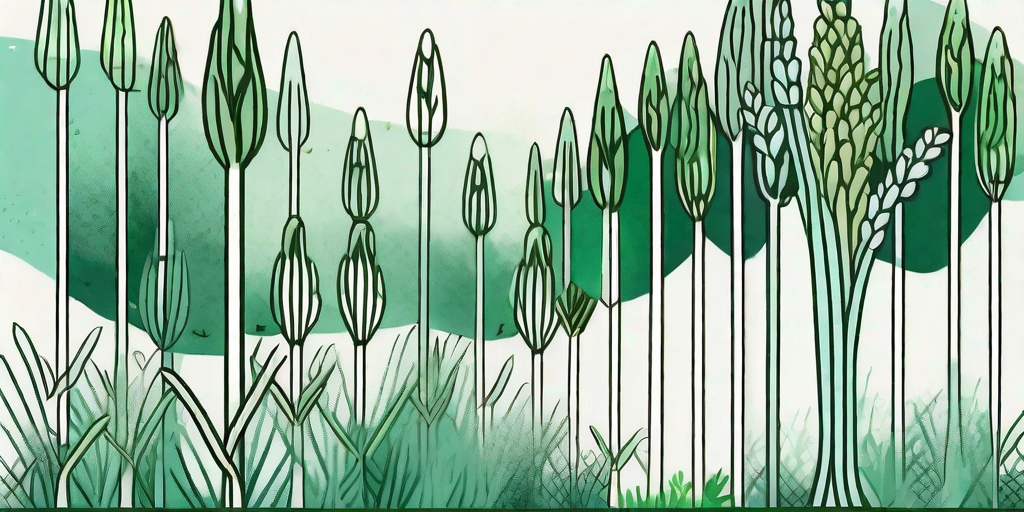
Welcome, green-thumbed friends and aspiring gardeners! If you're here, it's likely because you've decided to take on the noble and rewarding challenge of growing your own asparagus. Fear not, for you have stumbled upon the ultimate guide to asparagus propagation, where we will delve into the nitty-gritty of this vegetable cultivation. So, buckle up, put on your gardening gloves, and let's get started!
Why Asparagus?
Before we dive into the how-to, let's first address the why. Why asparagus, you ask? Well, aside from the fact that it's delicious and nutritious, asparagus is a perennial plant that, once established, will provide you with a bountiful harvest for years to come. It's the gift that keeps on giving!
Moreover, asparagus is a hardy plant that can withstand a variety of climates, making it a suitable choice for gardeners in many different regions. Plus, there's something incredibly satisfying about watching those slender green spears emerge from the ground each spring.
Understanding Asparagus
Before we start sowing, it's important to understand the life cycle of asparagus. This will not only help you grow healthier plants, but it will also give you a newfound appreciation for this remarkable vegetable.
Asparagus plants start as a crown, which is essentially the root system of the plant. From this crown, the asparagus spears we know and love will eventually emerge. The spears, if not harvested, will grow into fern-like plants that help the asparagus crown store energy for the next growing season.
Now that we've covered the basics, let's move on to the fun part: growing your own asparagus!
Getting Started with Asparagus Propagation
Choosing the Right Variety
There are many different varieties of asparagus, each with its own unique characteristics. Some popular choices include 'Mary Washington', 'Jersey Knight', and 'Purple Passion'. Do a bit of research to find out which variety is best suited to your climate and taste preferences.
Remember, asparagus is a long-term commitment. Once planted, it can continue to produce for up to 20 years. So, choose wisely!
Preparing the Soil
Asparagus prefers well-drained soil with a pH between 6.5 and 7.5. If your soil is heavy clay or sandy, you may need to amend it with compost or other organic matter to improve its texture and fertility.
Asparagus also needs plenty of sun, so choose a location for your asparagus bed that gets at least six hours of direct sunlight each day.
Planting the Crowns
Asparagus crowns should be planted in early spring, as soon as the soil can be worked. Dig a trench about 12 inches wide and 6 inches deep. Place the crowns in the trench, spacing them about 18 inches apart. Cover the crowns with 2-3 inches of soil, and water thoroughly.
As the asparagus grows, continue to fill in the trench with soil until it is level with the ground. This gradual filling helps the asparagus establish a strong root system.
Caring for Your Asparagus
Once your asparagus is planted, it requires minimal care. Water regularly, especially during dry periods, and mulch around the plants to conserve moisture and suppress weeds.
In the fall, after the ferns have turned yellow and died back, cut them down to ground level. This helps prevent disease and prepares the asparagus bed for winter.
Harvesting Your Asparagus
The hardest part of growing asparagus is waiting for the first harvest. It takes three years from the time you plant the crowns until you can harvest a full crop. However, the wait is well worth it!
In the third year, you can begin harvesting when the spears are about 8 inches tall and the tips are still tightly closed. Simply snap off the spears at ground level. The harvest period typically lasts for about two to three weeks.
Frequently Asked Questions
- Can I grow asparagus from seeds?
Yes, asparagus can be grown from seeds, but it is more challenging and takes longer to establish than growing from crowns.
- Why are my asparagus spears thin?
Thin asparagus spears can be a sign of overcrowding or nutrient deficiency. Make sure your plants are spaced properly and are receiving adequate nutrients.
- Can I grow asparagus in a pot?
While it's possible to grow asparagus in a pot, it's not ideal. Asparagus prefers to spread out, and a pot can restrict its growth.
Conclusion
There you have it, folks! A comprehensive guide to growing your own asparagus. While it may seem daunting at first, remember that the best things in life often require a bit of patience and hard work. And when you're enjoying a plate of fresh, homegrown asparagus, you'll know it was all worth it.
So, what are you waiting for? Get out there and start growing!











